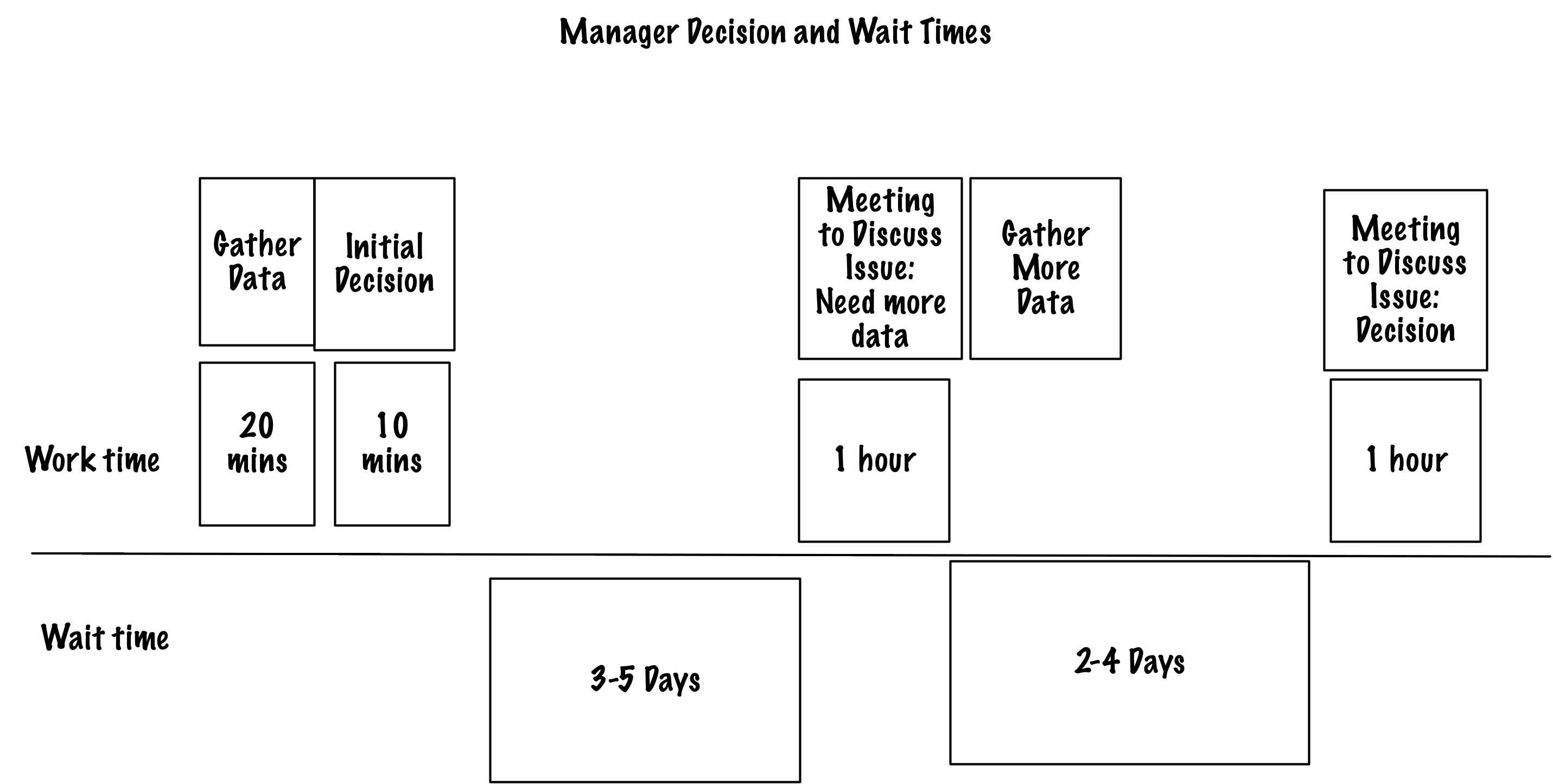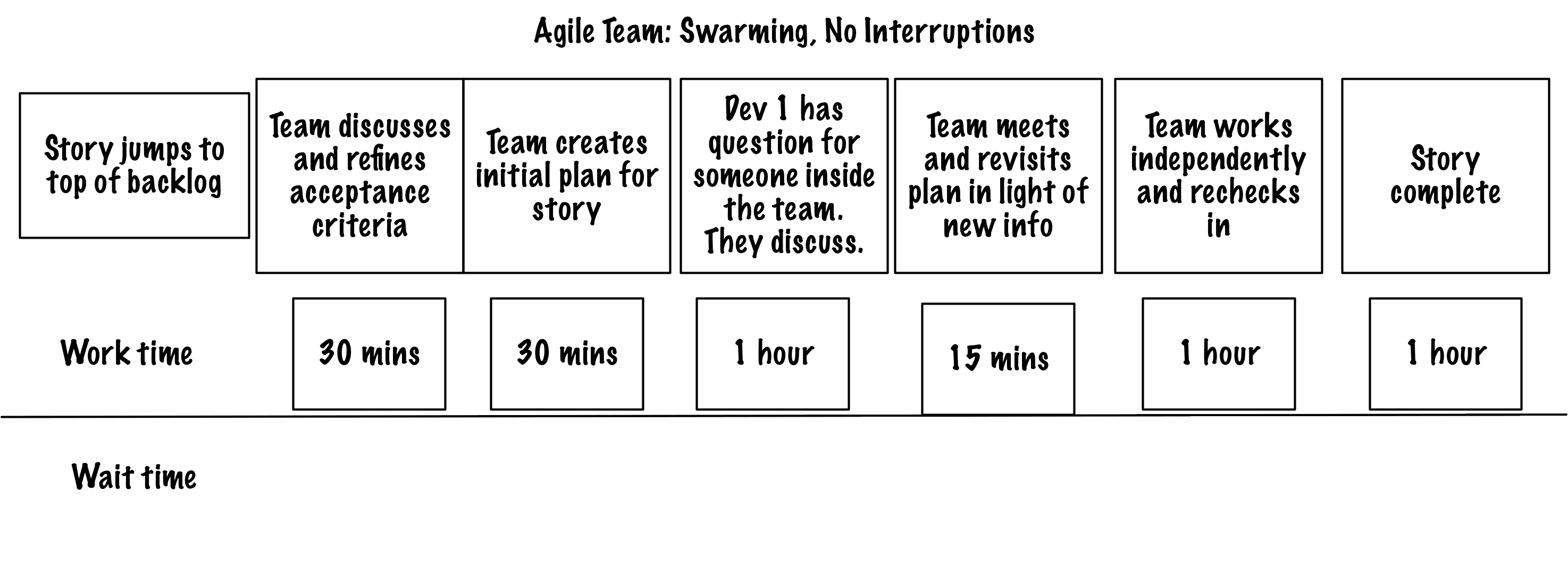Why Managers Believe Multitasking Works: Long Decision Wait Times
When I teach any sort of product/project/portfolio management, I ask, “Who believes multitasking works?”
Always, at least several managers raise their hands. They believe multitasking works because they multitask all the time. Why?
Because the managers have short work-time and long decision-wait time.
If you are a manager, your time for any given decision looks like this:
The work-time is short. The manager might have to gather some data and make an initial decision. Too many managers can’t make the final decision—they need to collaborate with others. That means they wait for the next decision state, often a meeting.
My experience is that many managers prepare for those meetings in advance. They gather the data, make their initial decision and then wait for the meeting. The meeting might not take much time. However, if the managers need more data, the managers have to collect more data and wait for the next meeting.
The managers spend less work- time and much more in wait-time.
Contrast that activity with a well-functioning team (agile or not). That team will spend most of their time working, not waiting. I use swarming as an example because teams don’t have to be agile to swarm. Here’s a value stream for an agile team that tends to swarm:
Technical people—especially those who work as part of an agile team—need time to think and focus. The more they work as a team, the less “wait-for-decision” time they need. They are all right there. They can decide without any waiting time.
When the decision wait-time dwarfs the actual work time, people stop work on this thing and move to that thing: multitasking. Throughput decreases.
When the work-time dwarfs the decision-wait time, people finish one thing and move to another. Their throughput increases.
Is your decision-wait time too long?
Technical teams, regardless of their project approach, need focus time to minimize their decision-wait time. If your decision-wait time is longer than you want, you might not have the people on the team or the information you need.
And, if you’re a manager, you might have the same problem.
Just because managers multitask all the time does not mean multitasking is the best way to finish the work.
| Published on Java Code Geeks with permission by Johanna Rothman , partner at our JCG program. See the original article here: Why Managers Believe Multitasking Works: Long Decision Wait Times Opinions expressed by Java Code Geeks contributors are their own. |




